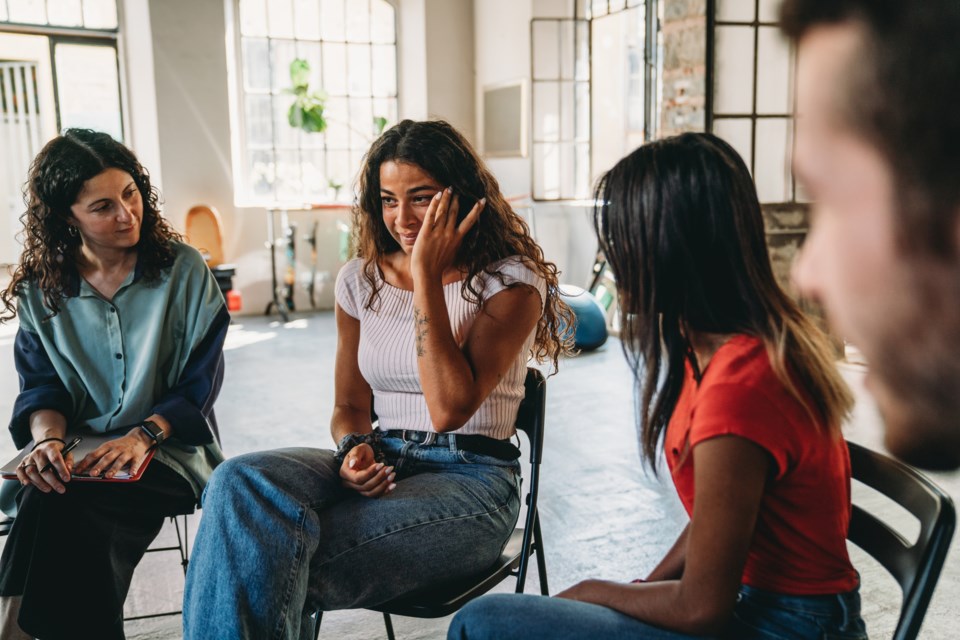When people think about addiction or addictive behaviour they often focus on the individual who is afflicted. It could be alcohol use disorder or opiate dependence, but what is often overlooked are the family members, friends or a spouse who are also entangled in the often destructive and selfish behaviour of the addict in the throes of addiction.
"A codependent person is one who has let another person's behaviour affect them and who is obsessed with controlling that other person's behaviour," said addictions/mental health counsellor Nina Peers. "I myself was in a [codependent] relationship with an addict for many years and had to learn about self-awareness, healthy boundaries and how his addiction was causing chaos in both our lives."
Now, Peers has a book and guide she wrote titled Dancing with Addiction: Survivor's Guide to Being Addicted to the Addict. The book details her personal journey and recovery from codependency.
"The book was in the making for the past 20 years," said Peers. "It's part memoir, part self-help, and offers a glimpse into how those who are living around destructive addiction can find a way forward."
Peers said she wrote the book because of encountering so many others going through the same thing she went through, and not knowing where to turn for help.
"My husband was an addict, and so when I was trying to get help, I remember going to Al-Anon [Alcoholics Anonymous family groups] because they didn't have Nar-Anon [Narcotics Anonymous family groups] at the time," said Peers. "My girlfriend and I started a (Nar-Anon) group here [qathet] that helped friends and family members who are living with an addict in their lives."
Peers said she knows all too well how alone and desperate family members feel, and it was only after attending a support meeting she realized it wasn't just her partner with the problem.
"I was living a double life, hunting the addict down, trying to clean him up, while trying to appear normal," said Peers. "My intention of this book is so people can read this and to be able to help them get better support."
When a person is in a relationship with someone who is addicted to a substance, they can become so focused on controlling the addict's behaviour that their own behaviour, usually unknowingly, continues the cycle of destruction, she added.
"I worked hard to get where I am today; it was not an overnight success," said Peers. "Going through manipulation, serious lack of boundaries, depression and isolation, I read a lot of literature, went through the 12-step [Nar-Anon family groups program], and thus, the inspiration of this book was born."
Peers said she wanted to write a book that is different from what is currently available, something comprehensive and distilled from everything she had learned from meetings, her own self-work and books she had read that helped her recover.
"The common denominator in recovery is identifying with others," said Peers. "The realization we are not alone in this brings great relief and comfort."
Peers believes that if there was more education for young people around the issues of codependency, people could better recognize the signs and understand there are healthier ways to help a partner or friend.
"Dancing with Addiction helps reveal the obsessive dance with the addict and provides the tools to work through this painful process," said Peers. "I suffered tremendously before I sought help; I was unaware that I allowed all the dysfunction in my life and I needed help in changing my situation."
Peers said that while doing the work [12-step for family and friends], it came as a revelation and surprise to her that she played a part in the addiction.
"My rescuing [him] or codependency was just as destructive as the addict's addiction," said Peers. "I went to great lengths to avoid looking at myself; I did not think there was anything wrong with me. I just wanted the addict to stop using drugs."
Peers' book and guide take readers on a journey of her own experience of pain and feelings of powerlessness, rage, denial and shame, eventually letting go, acceptance and moving forward.
"I was blind to the fact that this 'caretaking' made the situation worse," said Peers. "I was under the illusion that I was helping, when, in reality, what I was doing was making it easier for the addict to use more drugs, enabling it."
Peers, who went to McMaster University, is a Canadian certified addictions counsellor and works as a mental health and substance use counsellor in the qathet region. She said she hopes her book helps people understand how addiction and codependency join together to create a destructive dance.
"If we don't learn how to have good boundaries, if we don't love ourselves, what happens is, we [could] end up letting these [unhealthy] relationships take over," said Peers. "We can forget who we are, but I learned about myself and how to set boundaries; I learned what is acceptable and not acceptable behaviour."
To find Dancing with Addiction, email Peers at [email protected] or call 604.483.1659.
Join the Peak’s email list for the top headlines right in your inbox Monday to Friday.




